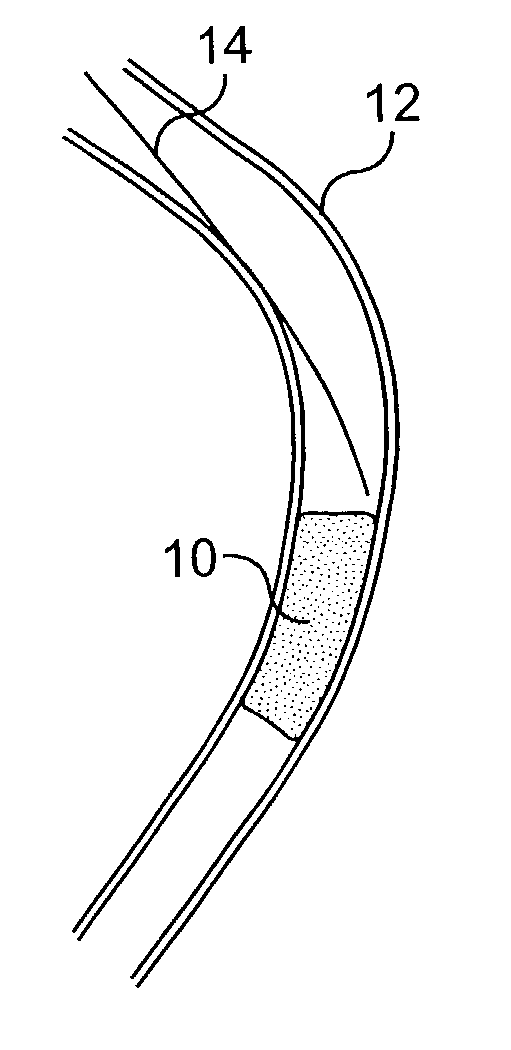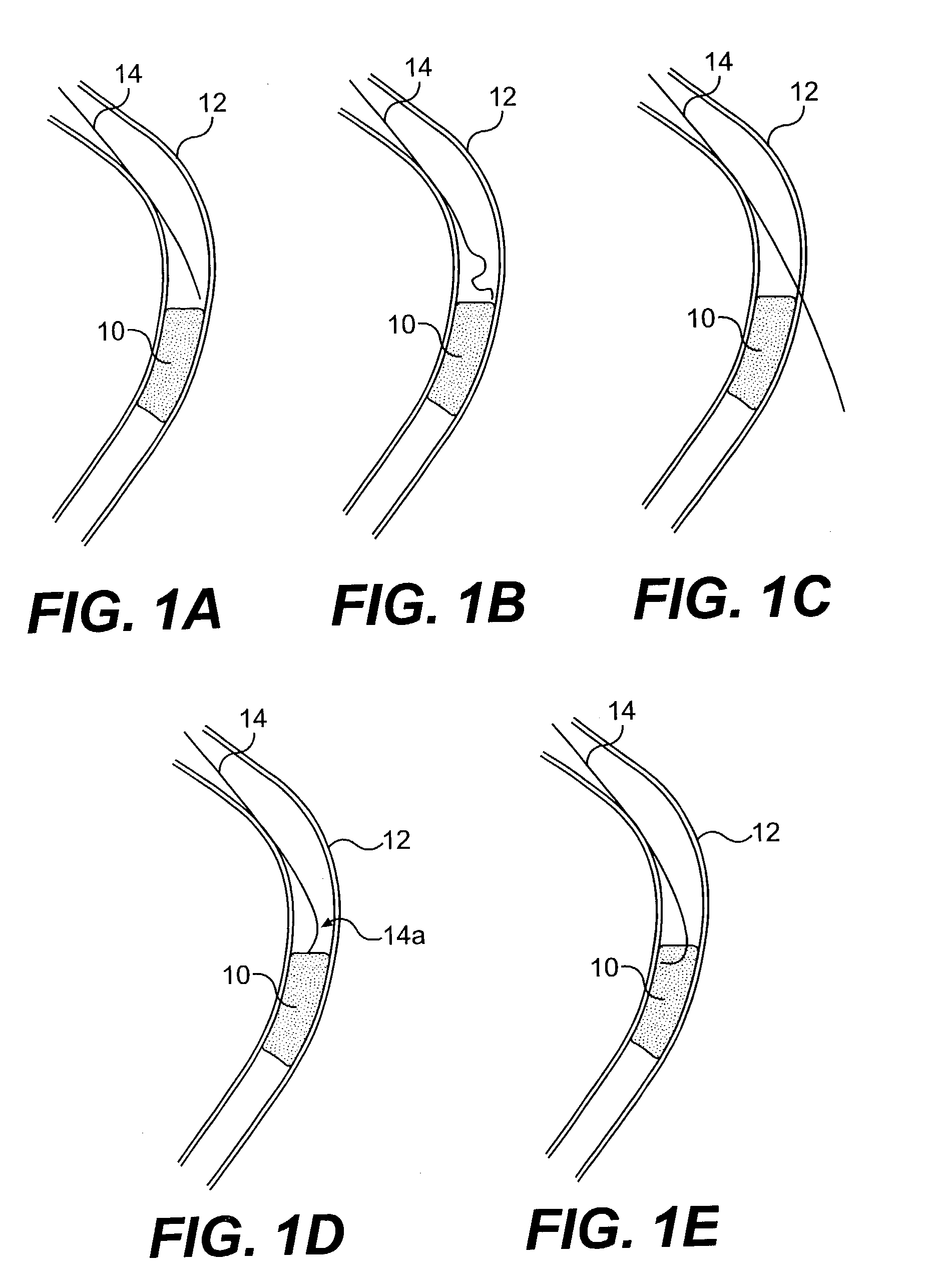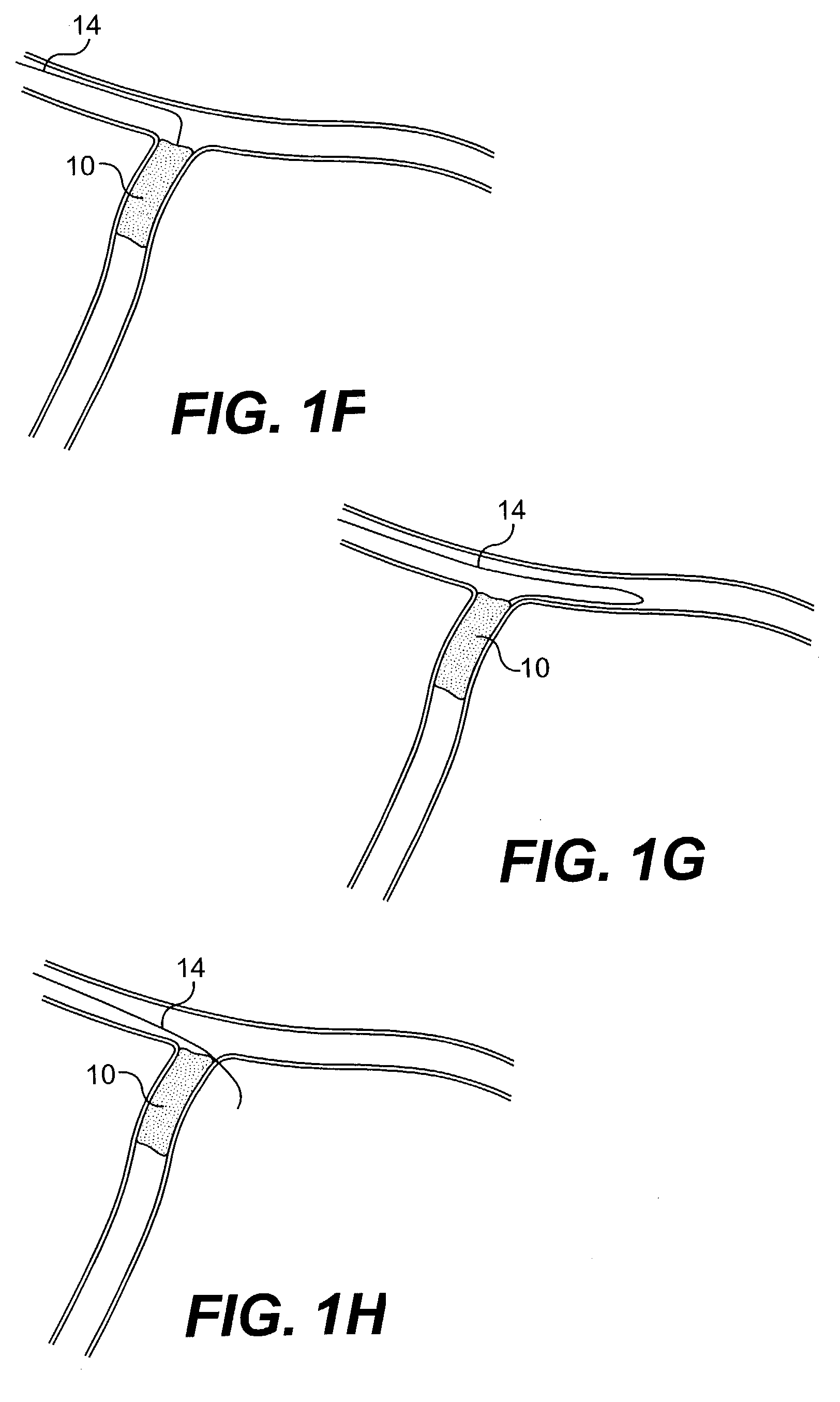Guide wire control catheters for crossing occlusions and related methods of use
a technology of control catheter and guide wire, which is applied in the field of applicative and method used to cross lesions in blood vessels, can solve the problems of blockage that cannot be advanced across the occlusion to dilate and treat, damage to the heart, and blockage that can have serious medical consequences
- Summary
- Abstract
- Description
- Claims
- Application Information
AI Technical Summary
Benefits of technology
Problems solved by technology
Method used
Image
Examples
Embodiment Construction
[0001] 1. Field of the Invention
[0002] The present invention relates to apparatus and methods used to cross lesions in blood vessels, and in more particular embodiments, catheters for controlling a guide wire to cross a chronic total occlusion in a blood vessel.
[0003] 2. Background of the Invention
[0004] Chronic Total Occlusions (CTOs) are vascular lesions which are totally occluded and thereby inhibit normal blood flow. Such occlusions can occur anywhere in a patient's vascular system, arteries, and veins, including coronary vessels, as well as carotids, renals, cerebrals, iliacs, femorals, popliteals, and other peripheral arteries.
[0005] Typically, a CTO may be occluded for several weeks to several months, or longer. Such blockages can have serious medical consequences, depending upon their location within a patient's vascular system. For example, blockage of the coronary vessels that supply blood to the heart can cause damage to the heart.
[0006] Since most lesions form episodical...
PUM
 Login to View More
Login to View More Abstract
Description
Claims
Application Information
 Login to View More
Login to View More - R&D
- Intellectual Property
- Life Sciences
- Materials
- Tech Scout
- Unparalleled Data Quality
- Higher Quality Content
- 60% Fewer Hallucinations
Browse by: Latest US Patents, China's latest patents, Technical Efficacy Thesaurus, Application Domain, Technology Topic, Popular Technical Reports.
© 2025 PatSnap. All rights reserved.Legal|Privacy policy|Modern Slavery Act Transparency Statement|Sitemap|About US| Contact US: help@patsnap.com



